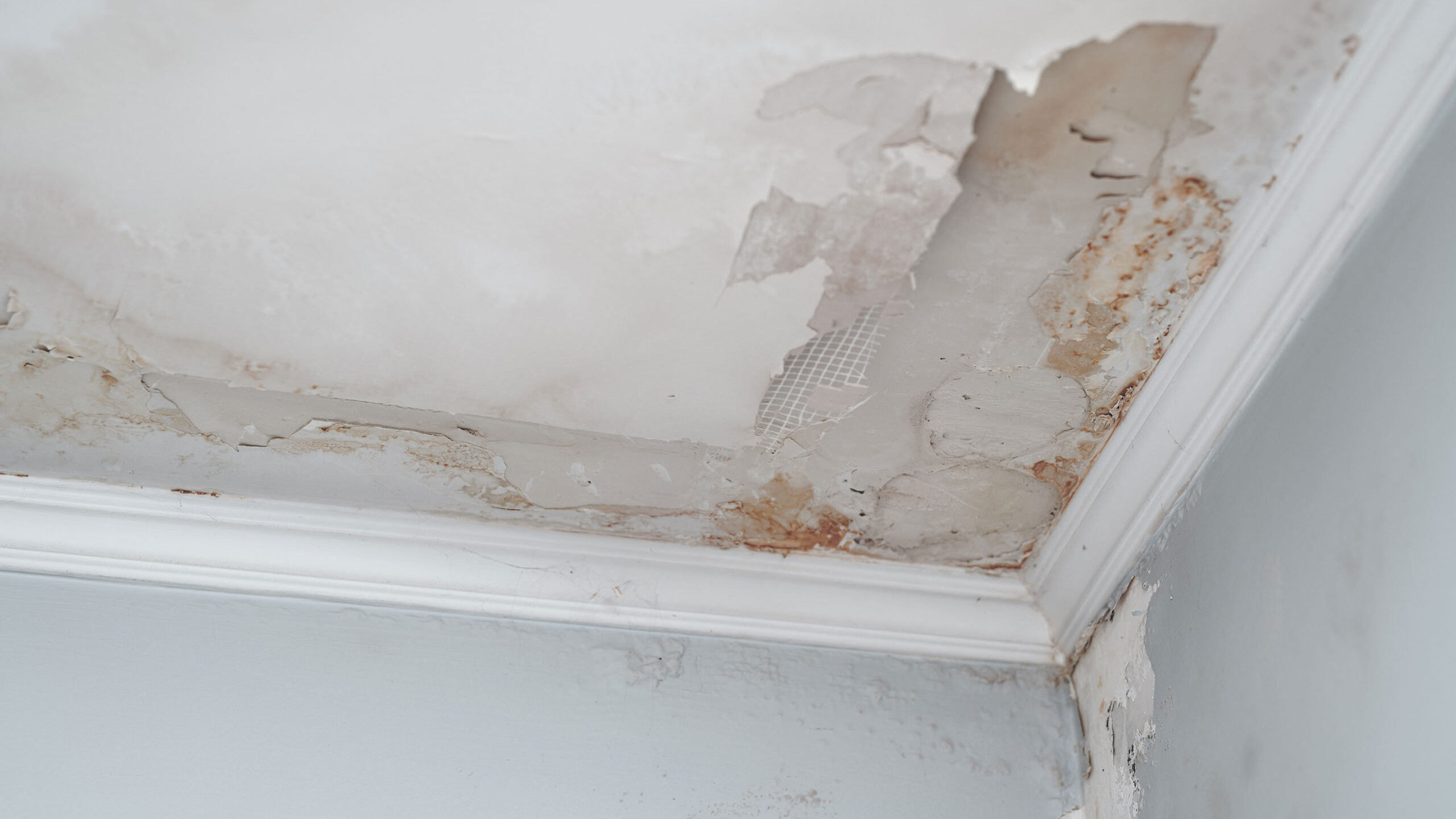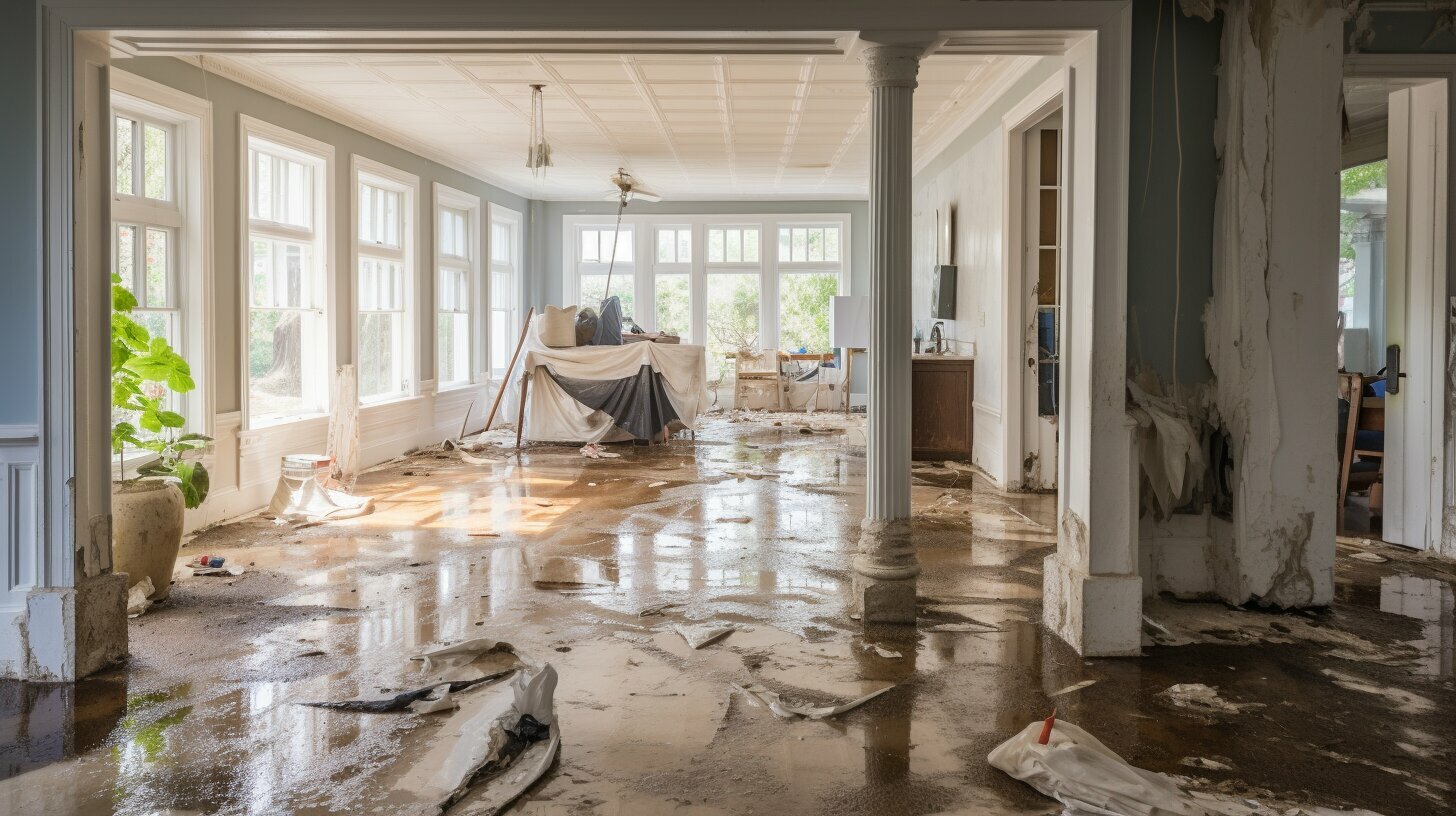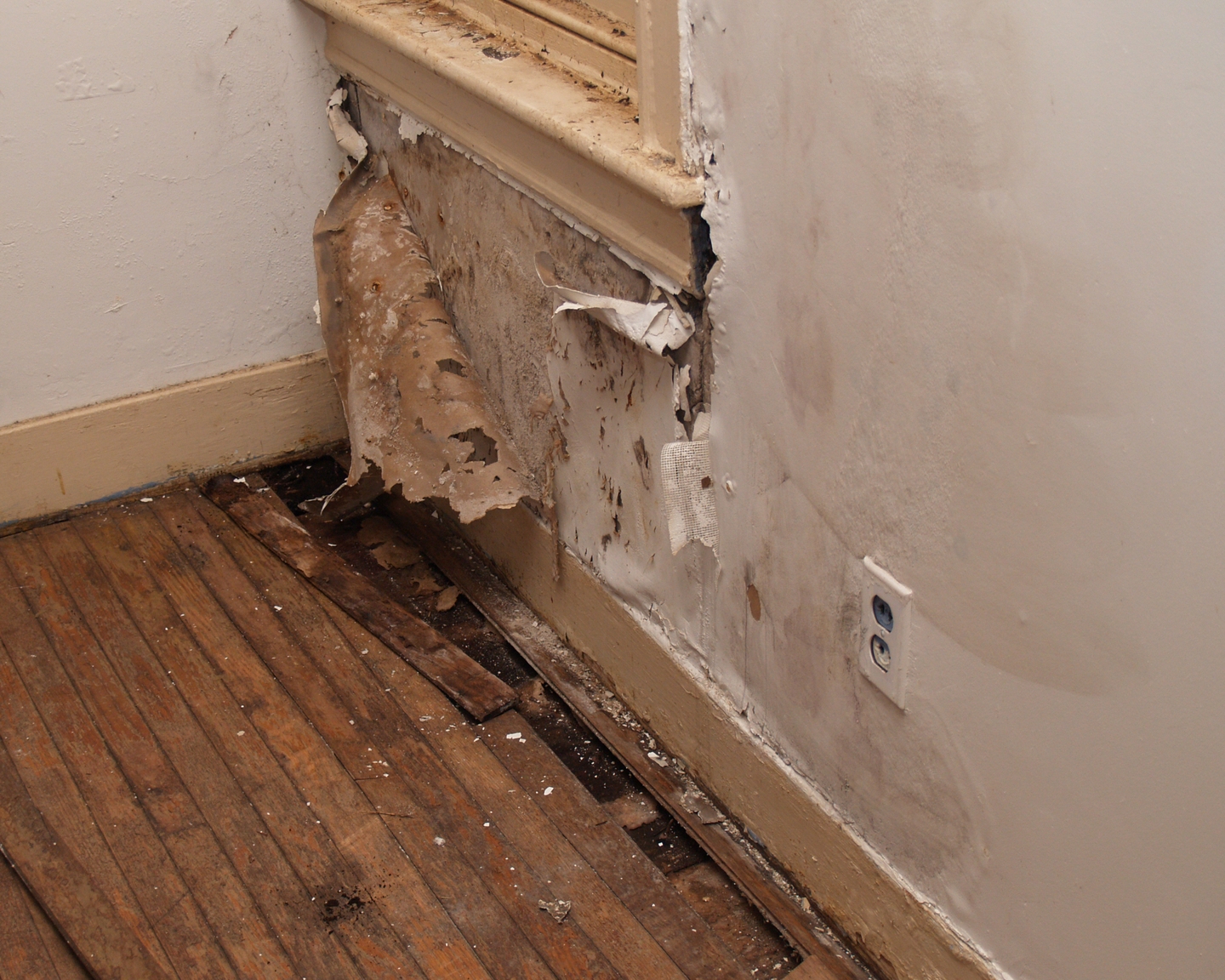Water is a stealthy invader in homes. What starts as a tiny leak can quietly erode your walls, floors, and health before you even notice. The trick is to spot the red flags early — before mold, rotting structure, or million-dollar repairs take over.
Here are the top 7 signs that water damage may be happening in your home — and what you should do next to stop the problem in its tracks.
1. Stains, Discoloration, or Water Rings on Walls & Ceilings
What you’ll see:
- Brown, yellow, or rust-colored patches that weren’t there before
- “Rings” or halos—concentric outlines of color where water spread outward
- Growing spots (they slowly expand) or irregular drip-shaped stains
Why it matters:
These stains are among the earliest visible signs that water is leaking somewhere behind or above the surface. Painting over them might hide the aesthetic issue, but won’t stop the ongoing damage underneath.
What to do next:
- Trace upwards and sideways from the stain to try to locate the source (roof leak, plumbing, HVAC).
- Use a moisture meter if available to test how deep the dampness goes.
- Call a professional if the stain grows or recurs after repairs; the underlying cause isn’t resolved.

2. Bubbling, Peeling, or Flaking Paint / Wallpaper
What you’ll see:
- Paint or wallpaper that blisters, bubbles, or “lifts” off the wall
- Edges of wallpaper curling or separating
- Cracks forming in areas previously smooth
Why it matters:
Moisture getting behind walls or under surfaces weakens the adhesives or bond, causing layers to lose adhesion. That’s a strong hint: water has infiltrated beyond surface levels.
What to do next:
- Peel back a modest section (if safe) to see if the surface beneath is damp or soft.
- Dry the area thoroughly (fan, dehumidifier, open windows).
- Investigate and repair the source. Only after everything is dry should you reapply paint or wallpaper.
3. Soft, Spongy, or Sagging Drywall / Ceilings
What you’ll see or feel:
- Ceiling or wall areas that feel “soft” or “spongy” when gently pressed
- Sagging or drooping panels or ceiling surfaces
- Bowed or bulging walls
Why it matters:
Drywall (or plaster) absorbs and holds moisture, losing its structural integrity when wet. A sagging ceiling or soft wall suggests prolonged saturation and possibly structural risk.
What to do next:
- Don’t press or lean heavy weight on sagging spots (they may collapse).
- Cut a small inspection hole (if safe) to determine depth and wetness behind.
- Dry using fans, dehumidifiers, or professional-grade drying equipment.
- Replace or reinforce damaged sections once fully dry.
4. Warped, Buckling, or Cupped Floors
What you’ll see or feel:
- Wood or laminate planks lifting from one edge
- Boards that bend or curve (cupping)
- Gaps opening up between floorboards
Why it matters:
Floors are especially vulnerable because water can wick under edges and expand boards unevenly. Structural underlayment or subfloor can also be compromised.
What to do next:
- Remove rugs, furniture, and give the floor time to air-dry in controlled conditions.
- Use dehumidifiers and fans to help pull moisture upward (away from the subfloor).
- After drying, inspect the underside (if accessible) for damage.
- Replace warped boards, but only after you’re sure the area is dry.

5. Musty or Moldy Smell (Especially in Hidden Areas)
What you’ll sense:
- A persistent damp, earthy, “wet paper” odor
- Strong smell in basements, crawl spaces, behind walls, or under floors
- Smell intensifies during humid weather or at night
Why it matters:
Mold growth begins within 24–48 hours in wet environments. The smell is often your first clue before you can see the mold patches.
What to do next:
- Ventilate the area (open windows, use fans).
- Use a moisture meter or thermal camera to detect damp zones behind surfaces.
- If mold is visible or extensive, consult a mold remediation or mitigation professional.
- Repair the water source and ensure proper drying to stop regrowth.
6. Spikes in Water Bills (Without Apparent Usage Increase)
What you’ll notice:
- Sudden, unexplained increase in monthly water usage
- High consumption when you haven’t changed habits
- A bill that doesn’t make sense given your pattern
Why it matters:
A hidden leak (behind walls, under slab, in crawlspaces) can continuously waste hundreds of gallons without you seeing a single drop.
What to do next:
- Turn off all water-using appliances and fixtures and watch the meter — if it keeps moving, you’ve got a leak.
- Check toilets (silent leaks), irrigation, water heaters, and buried pipes.
- Contact a plumber to perform diagnostics like pressure testing or infrared scanning.
7. Sounds of Dripping, Gurgling, or Running Water
What you’ll hear:
- Drip… drip… when no faucet is on
- Gurgling or bubbling noises in walls or under floors
- Unusual “running water” where no one is home
Why it matters:
The ears can detect leaks before the eyes. Sound travels through walls or cavities and may lead you straight to the problem spot.
What to do next:
- Quiet the ambient noise (TV off, appliances off) and see if you can localize the sound.
- Use a stethoscope or listening device (plumbing professionals often do).
- Mark the spot and open access (panel, drywall) carefully to investigate the source.
- Stop the flow and repair the leak as soon as it’s found.
Why Quick Action Matters
Water damage doesn’t just ruin finishes — it degrades structural materials, invites mold, and can lead to serious health risks or expensive repairs. Delaying makes things exponentially worse.

What to Do After Spotting Water Damage (Step-by-Step)
Here’s a quick action plan to follow after you see or suspect water damage:
- Stop the Water Flow (If Possible): Shut off water supply at the fixture, zone valve, or main shut-off.
- Ensure Safety: Turn off electricity in affected areas if wiring or outlets may be wet.
- Document Everything: Take photos or videos before you disturb the damage (helpful for insurance).
- Extract Standing Water & Dry: Use wet/dry vacs, pumps, fans, dehumidifiers, and air movers.
- Open Up Affected Areas: Cut small access holes in drywall, lift flooring, remove baseboards to reach wet cavities.
- Use Moisture Detection: Employ moisture meters, infrared thermal imaging, or infrared cameras to find “hidden” dampness.
- Mold Remediation (If Present): For small mold patches, you may remediate yourself with proper safety gear. For widespread mold, call professionals.
- Repair & Restore: Replace damaged drywall, insulation, floorboards, baseboards. Repaint or wallpaper only after thorough drying.
Tips to Prevent Future Water Damage
- Inspect your roof, gutters, flashing, and downspouts annually.
- Maintain caulking/seals around windows, doors, tubs, and sinks.
- Monitor appliances, hoses, and fixtures for leaks.
- Use a dehumidifier in basements or damp zones.
- Consider a smart water-leak detection system or automatic shutoff.
- Ensure good grading and drainage around your foundation to divert water away.
